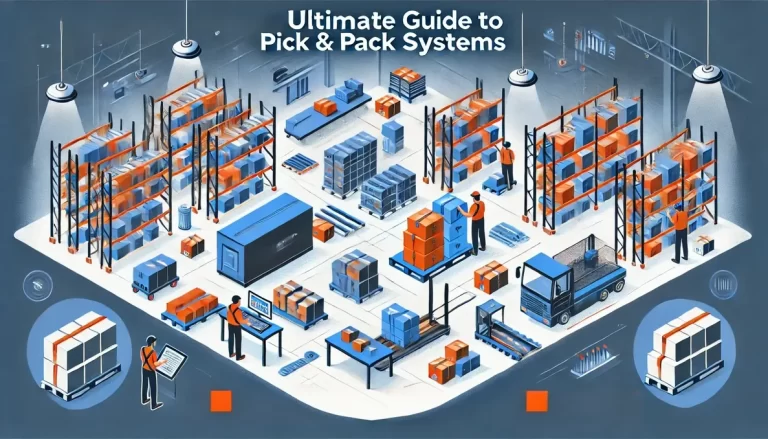The Rise of E-commerce and WMS
- Why WMSOne Stands Out In Warehouse Management - December 30, 2024
- The Future of Warehouse Inventory Management in 2025 - December 9, 2024
- Cold Storage Warehouse: Keeping Food Fresh And Safe - October 3, 2024
Introduction:
E-commerce has changed the way we shop and, consequently, how warehouses operate. E-commerce and WMS work together to streamline inventory and order management for improved customer satisfaction. With the rise of online shopping, businesses need to manage their inventory more efficiently than ever. This is where Warehouse Management Systems (WMS) come in.

Let’s explore how e-commerce has impacted WMS.
Faster Order Processing:
In the past, warehouses mainly supplied retail stores with large quantities of products. Now, with e-commerce, warehouses have to handle numerous small orders that need to be delivered quickly. A good WMS helps manage these tasks by:
- Automating order picking: Quickly identifying where products are located.
- Speeding up packing: Ensuring items are packed and labeled correctly.
- Managing shipping: Organizing delivery schedules and routes.
Real-time Inventory Management:
E-commerce requires accurate inventory tracking to prevent overselling or running out of stock. WMS provides real-time data on stock levels, helping businesses keep track of what’s available and what needs restocking. This ensures:
- Better stock accuracy: Knowing exactly what’s in the warehouse.
- Efficient restocking: Ordering new stock before running out.
- Reduced waste: Preventing excess stock that may not sell.
Handling Returns Efficiently:
Online shopping comes with a higher return rate compared to in-store purchases. Managing returns efficiently is crucial for customer satisfaction and cost management. WMS helps by:
- Tracking returns: Logging returned items accurately.
- Processing refunds or exchanges: Ensuring customers get their money back or new products quickly.
- Restocking returned items: Quickly returning usable products to inventory.
Enhancing Customer Satisfaction:
A reliable WMS improves overall customer satisfaction by:
- Ensuring order accuracy: Reducing errors in orders, so customers get exactly what they ordered.
- Faster deliveries: Speeding up the process from order to delivery.
- Improving communication: Providing customers with updates on their order status.
Managing Increased Volume:
E-commerce has led to an increase in the volume of goods moving through warehouses. During peak shopping seasons, such as holidays, this volume can skyrocket. WMS helps manage this increased volume by:
- Scaling operations: Adjusting to handle more orders without sacrificing efficiency.
- Optimizing space: Using warehouse space more effectively to store more products.
- Streamlining workflow: Organizing tasks and workflows to handle higher demand.
Integrating Technology:
Modern WMS integrates with other technologies to further improve efficiency:
- Barcode scanning: Quickly identifying and tracking products.
- RFID technology: Using radio waves to track items in real-time.
- Automation and robotics: Using machines to assist with picking, packing, and sorting items.

Evolving WMS Features for the Future:
As e-commerce continues to grow, WMS features are constantly evolving. Here are some trends to watch:
- Cloud-Based WMS: Cloud-based systems offer greater scalability and flexibility, making them ideal for businesses with fluctuating order volumes.
- Robotics and Automation: Robots can handle repetitive tasks like picking and packing, freeing up human workers for more complex tasks.
- Artificial Intelligence (AI): AI can be used for predictive analytics, helping warehouses forecast demand and optimize inventory levels.
- Internet of Things (IoT): IoT sensors can track items in real-time, providing even greater visibility into inventory and warehouse operations.
Conclusion:
E-commerce’s boom has forced warehouses to adapt. Warehouse Management Systems (WMS) are now essential, ensuring accurate inventory, fast order processing, and happy customers. As e-commerce grows, WMS will become even more crucial for smooth and efficient operations.





